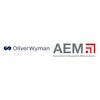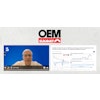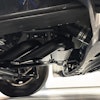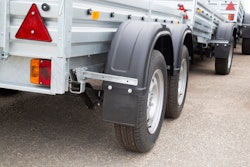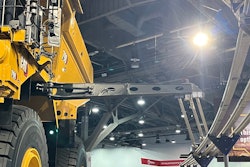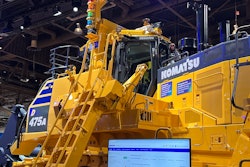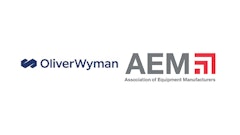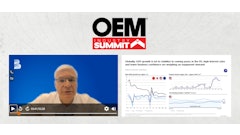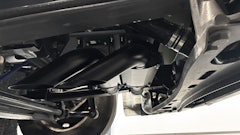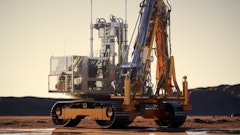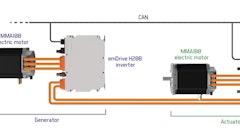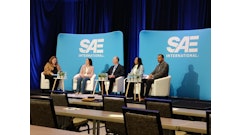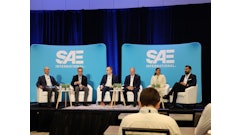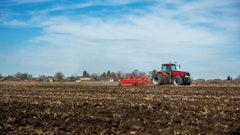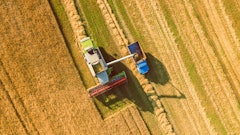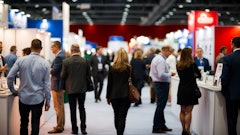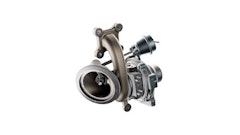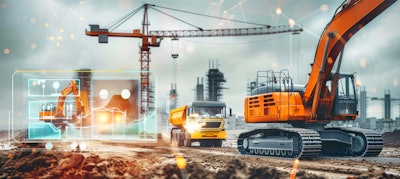
During the 2024 OEM Industry Summit, Dr. Wilfried Aulbur, senior partner at Roland Berger, explored infrastructure challenges to material shortages and the path to zero emissions, this presentation will not only assess the state of the industry in the webinar "OEM Off-Highway Executive Outlook," which kicked off the event.
Watch the webinar on-demand.
Aulbur answered additional questions not addressed during the webinar.
Question: Is there a deeper market production volume correction happening in off-highway market (construction, agriculture and material handling) in 2024 post over-production/stimulus/over-stocking (2021 to 2023)? When do you expect the off-highway market recovery to happen?
Aulbur: Yes, we have certainly seen years of high production and sales driven by COVID demand, high raw material prices (due to among other things the war in Ukraine), significant stimulus packages by governments across the globe, etc. Demand was high and many customers bought what the needed and wanted to buy. As the economic environment changed, their need to replace equipment was not acute which translated into lower sales. Sometimes, this led to high dealer inventories as original equipment manufacturers (OEMs) did not adjust production schedules fast enough to match demand. Given this environment, we expect 2025 to be another muted year for agriculture and potentially also for construction. 2026 should hopefully look up again.
Question: What percentage of the electrification LAG due to government policies? Is there new guidance based on new policies? Did you compare countries with and without these electrification policies or states such as California?
Aulbur: Electrification in off-highway is gaining traction in some sub-segments where positive total cost of ownership (TCO) versus internal combustion engine (ICE) vehicles is within reach, e.g., 7 to 9-ton wheel loaders in China or large mining trucks. From a regulatory perspective, there has been less push on a country or region level, however, we see cities that aim to impose zero-emission construction zones. CARB is working on off-highway regulation. However, we will have to see how this progresses given a changed political environment. In terms of country comparisons, we have done comparisons between different European countries, where a focused effort by, e.g., Nordic countries typically increases electrification rates vs. less committed countries, e.g., in the Southern part of Europe. The overall penetration rates do remain low in either case, however.
Question: What do you view to be the average machine life of these products and how do you deal with the problem if technological obsolescence?
Aulbur: I assume the question of average machine life refers more to the powertrain as that is the major change between an EV and ICE vehicle. Electrical components (e-motors, inverters, etc.) are generally believed to robust in terms of longevity and quality. We will have to see how this pans out under real-life off-highway situations, but first indications from the commercial vehicle industry seem to indicate that this holds. Longevity of batteries very much depends on the use case and the cell chemistry.
Lithium iron phosphate (LFP) batteries for small applications could potentially be relevant solutions that would not lead to major limitations in life times if we assume that the Commercial Vehicle industry is a relevant proxy for off-highway. In large mining trucks, batteries would reach the end of their useful life much faster, say, within a couple of years. While this means that we need a good channel for battery reuse and recycling, this situation is favorable from a technology obsolescence perspective, as we, in principle, don't have to commit to a particular cell chemistry for the long run.
Question: What aspect of off-highway vehicle (OHV) design besides battery/power present the biggest problems/opportunities for vehicle design?
Aulbur: There are several challenges given the harsh environment in which off-highway equipment has to operate. Besides the large number of different vehicle types and use cases, large applications pose a particular problem. Here, technology transfer from light vehicles or medium and heavy duty trucks is not possible and the off-highway industry needs to develop standalone solutions. In addition, finding scalable, modular approaches to battery technology to build as much scale as possible in a highly fragmented environment, is challenging as well.
Question: Do you see the best hybrid solution being diesel generator and electric powertrain for operator experience, machine work time and TCO parity?
Aulbur: Diesel electric solutions have been in operation for some time, e.g., for large mining operations and have shown to be reliable and efficient. Combining this with renewable diesel or other biofuels is a fast way to decarbonize not only newly purchased vehicles but the whole fleet. Generally, I am in favor of finding the easiest and most cost-effective way for de-carbinization depending on the application rather than to demand a particular technology.
Question: What are the difficulties in setting up EV infrastructure in a mine or a steel plant? Are we seeing faster OH zero-emission vehicle (ZEV) adoption in these relatively controlled environments vs in road construction type activities?
Aulbur: We have worked with mining operators that have put up large solar farms to generate the electricity that they need to operate their sites. Generating energy on site is attractive vs trucking diesel to sites. It is also feasible for new mines that have decades of exploration time left. Compared to this, electric infrastructure for road construction is more challenging. We will see some solutions develop down the line and I am sure that if we have TCO competitive construction machines that make road construction cheaper compared to what it is today, we will also find a way to provide energy to these sites. However, as I said, this is more challenging compared to other applications.
Question: What's your view on future CVOH OEM consolidations?
Aulbur: Given the large geopolitical uncertainties, the technological disruptions and overall economic volatility, we have seen a significant increase in partnerships, for example, in the Commercial Vehicle industry. Rather than carrying all the burden of new technologies themselves, players have come together to invest jointly, e.g., in battery manufacturing in the U.S. I would expect a larger focus on collaboration also in the off-highway industry. In addition, some consolidation will likely occur as smaller players find it difficult to invest across the board and larger players may want to complement product and market portfolios.
Question: What are the agriculture demand expectations for 2025 specifically?
Aulbur: We do expect 2025 to be a difficult year for agriculture, in particular, also for the U.S. Detailed predictions depend on the overall environment. For example, what is the stance of the new administration on biofuels? How aggressive will we engage in a trade war with China? While a positive approach in the former would be good for farmers, an aggressive approach in the latter would mean that further soy and corn exports would migrate to South America.
Question: What are the general construction expectations for 2025 specifically (ex: non-residential, residential and road building)?
Aulbur: The overall development of the industry will depend on the actions of the incoming administration. Most economists believe that aggressive tariffs would lead to domestic inflation and hence an increase or at the very least no further reduction in interest rates. This would potentially depress GDP and impact residential and non-residential construction. Abolishing major industrial policies like the IRA would have a negative impact on construction, as well.

